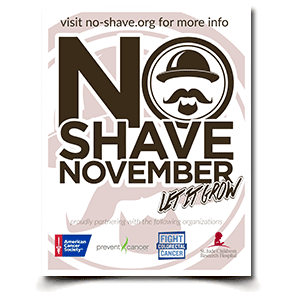The first mission in creating safe meals for children with food allergies is avoiding the offending ingredient. But there can be a downside to diets that miss out on the nutritional value found in foods kicked off the menu, according to Carolyn O’Neil, a registered dietitian and nutrition adviser to Best Food Facts.

According to FARE, Food Allergy Research and Education, Bill Haslam, Governor of Tennessee made a Proclamation that May 8-14 is Food Allergy Awareness Week in Tennessee. This Proclamation was made back in March of 2016.
Food Allergies Can Cause Nutrition Gaps
A study in The Journal of the Academy of Nutrition and Dietetics (JAND) cautions that such diets can induce vitamin and mineral deficiencies, anemia and other symptoms affecting a child’s growth and nutritional status.
“Food allergies and intolerances are on the rise,” said registered dietitian Vandana Sheth, spokesperson for the Academy of Nutrition and Dietetics. “But it’s important that we identify that kids are actually allergic (through proper testing) before we avoid those foods unnecessarily.”
Common food allergies
The eight foods that account for more than 90 percent of childhood cases of food allergies include milk, eggs, soy, peanuts, tree nuts (such as walnuts, almonds, pecans), wheat, fish and shellfish. Food intolerances such as lactose and gluten add even more children to the at-risk list for nutrient deficiencies, added O’Neil.
“A parent should always offer a variety of different foods within a food group,” said registered dietitian Cheryl Orlansky, president of the Greater Atlanta Dietetic Association. Gluten-free grains include rice, corn and quinoa. If a child is allergic to peanut butter, substitute sunflower seed butter, advised Sheth.
“If you skip dairy you skip its nine essential nutrients,” said registered dietitian and author of “The Greek Yogurt Kitchen,” Toby Amidor. “Studies show people with lactose intolerance may tolerate up to a cup of fluid milk, which has 12 grams of lactose. Cheeses, Greek yogurt and cottage cheese are much lower in lactose.”
Mind the gap
The food allergy study in JAND measured the benefit of dietary counseling in preventing and correcting nutrient deficiencies in children with food allergies. Results from the multi-center study in Italy showed that advice on what foods to eat to help fill in the gaps helped kids get enough calories, protein and other needed nutrients.
“I think it’s fascinating,” said Sheth. “They showed that dietary counseling really helped and growth patterns were improved.”
Sheth added, “A lot of kids outgrow allergies to eggs and milk by age 16. But other allergies such as nuts may be life long.” Her knowledge comes firsthand, as her own son was diagnosed with over 20 food allergies as a child.
“Now he’s a healthy JV football player. He’s down to four or five allergies including all nuts. I always feed the team so I can keep an eye on what he’s eating.”
When parents are equipped with the proper knowledge of common food allergies, they can help their kids enjoy a healthier childhood.
The Color Teal
The Color Teal is associated with Food Allergy Awareness. Just like the color Pink is for Breast Cancer Awareness and orange is MS Awareness.
Check out these Teal Food Allergy Awareness Post
To Learn More
- To learn more about food allergies, visit www.bestfoodfacts.org.
- Also check out FACET (Food Allergy Community of East Tennessee) and their Food Allergy Awareness Tips. VIsit joinfacet.com/awareness-week.html
- Also check out FARE, Food Allergy Research & Education and their info on Food Allergy Action Month including resources and downloads at foodallergy.org/food-allergy-awareness-week
Article compliments of Family Features, #12325, Photo courtesy of Getty Images (family eating breakfast). Also source from Center for Food Integrity. Plus info from FACET & FARE.
About the Author
Discover more from Courageous Christian Father
Subscribe to get the latest posts sent to your email.



Both of my sister’s in law are gluten intolerant and one of them is allergic to propylene glycol and has dairy allergies. When they come for a visit I try very hard to make things that are gluten free and easy for them to eat. I’ve got coconut flour and coconut oil in my cupboard so that I know when they come for a visit I can make a meal and dessert that tastes not only tastes good but is safe for them to eat as well.
That’s awesome and a good idea. Thanks for your comment.